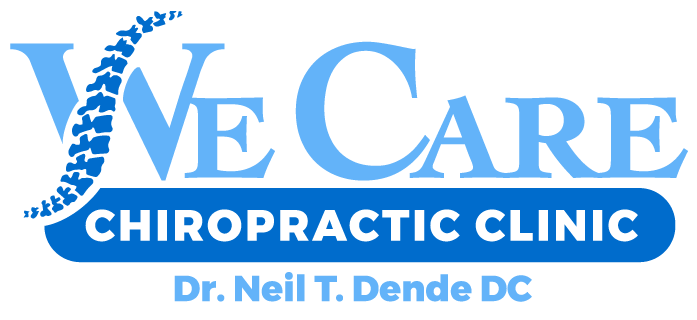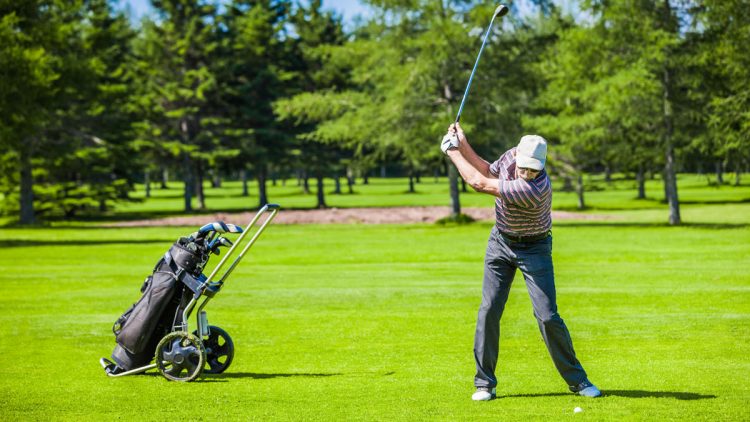Golf Injuries
WE CARE CHIROPRACTIC
24/7 Emergency Injury Appointments In Glendale, AZ
Golf takes a lot of time and effort, a great deal of skill, mental determination, and perseverance to be successful at it. The violent nature of a golf swing puts a significant amount of stress on the body, and a lot of pro golfers have endured some sort of continuous injury at one time or another throughout their careers. But you don’t have to be a pro to go through some of the most common golf injuries. Even weekend golfers can suffer from injuries. A lot of injuries can be avoided.
The following factors can lead to the most common golf injuries:
Back Pain
An estimated eighty percent of all Americans are going to endure some form of back pain throughout their lifetime, and the numbers might be higher among those that golf. The rotational stresses of golf swings places significant pressure on the spine and muscles. Mix that with the fact that golfers usually spend four to five hours in a bent-over position, repeating the same motion many times over, it is not a surprise that playing golf is going to cause minor strains in the back that can easily cause severe injury. For keeping your back healthy for golfing, utilize exercises that stretch and strengthen the back.
Tendinitis in the Elbows
Tendinitis is the most typical condition impacting the elbow. It is frequently called “tennis elbow” if there is injury to the outer tendons, and “golfer’s elbow” if there is injury to the inner tendons. Incidentally, a lot of golfer’s experience more from tennis elbow than they do from golfer’s elbow. The risks of developing tendinitis increases as we age and is higher in individuals that routinely conduct activities that require repeated movements that heighten stress on vulnerable tendons, like hitting golf balls. Additionally, these kinds of injuries can be exacerbated by a wrong golf swing.
Knee Pain
Knee pain happens from the strain put on a fragile knee to balance the rotation of the hip axis at the start of the swing. Excessive force placed on the knee can lead to torn ligaments. Those suffering with arthritis may endure more knee issues due to the degenerative nature of the disease, which leads to a progressive wearing away of the joint cartilage.
Rotator Cuff
Pain may be noticed in the shoulder and/or upper arm area at different stages of the golf swing, or after a round, usually throughout the night and while extending arms overhead. Injuries to the rotator cuff can develop through traumatic force as the result of an unsuccessfully executed golf swing, striking a root and/or rock, from a deep divot, and from overuse. Golfers can develop tendinitis, bursitis, and tears in their rotator cuff because of the recurring motion of golf swings.
Injuries to the Wrists
The recurring motions of golf, and the high speed of a general swing puts wrists at a high-risk for injury. Pain and irritation near the top of the wrist, endured at the top of the backswing and when hitting the ball, are commonplace. The most typical golf-associated wrist injury is tendinitis, or the inflammation of the tendons responsible for movement of the wrist. A lot of wrist injuries, in addition to other golf-associated injuries, can be reduced by pre-season and year-long golf-related training program.
Injuries to the Hands and Fingers
Just as with wrist injuries, the recurring motions of golf, and the high speed of the common swing place the hands and fingers at high-risk for injuries. Recurring blunt trauma or solitary severe trauma to the fingers can lead to a multitude of conditions like tendinitis, broken or malformed bones and a condition known as hypothenar-hammer syndrome.
Injuries to the Neck
Neck injuries are common for those that are new to golf but aren’t used to bending their bodies so much. Following a couple hours of swinging the clubs and hitting balls, the neck muscles might shorten in spasm and numb the neck into a distressing position.
Injuries to the Feet and Ankles
During a golf swing, golfers bodies act like a whip; power creation begins with the feet pushing against the ground. Each foot moves differently throughout golf swings. The back foot needs to enable for more pronation throughout the follow-through of a golf swing than the front facing foot. Injuries can happen when the golfer loses their footing and/or balance throughout their swing, when carrying out the swing with the wrong swing execution, and while hitting a ball off an uneven area.
Injuries to the Hips
The hip joint is typically very mobile and can endure large amounts of loading pressures, but is especially vulnerable to injury throughout golf, due to the swing involving tremendous amounts of pivoting and twisting movements. Throughout the golf swing, the hip is affected by continual adduction and extension forces. This necessitates a lot of control throughout the gluteal muscles and the adductor muscle system. It is those rotational and shearing forces that are the cause of injuries like strained groins and lower back injuries.
Injuries to the Skin
The skin is the largest organ of the body, and the most susceptible to damage when playing a round of golf. Continual exposure to the sun leads to skin damage and possibly skin cancer. Because golfers usually spend 4 to 5 hours exposed to the sun – usually throughout the hottest part of the day – they are most probably to injure their skin because of sunburns.
Glendale Back Pain Chiropractic Treatments
The treatments that Chiropractic’s offer is seriously worth giving a try. However, be sure to see a Chiropractic that has many years of experience in order to be certain you are going to be getting a treatment that is going to be effective, and to be on the safe side. These treatments will not just make you feel better, they will also help you to function better too! The treatments can help you to say good riddance to lower back pains.
To schedule chiropractic treatments
in Glendale call (623) 825-4444
AT WE CARE CHIROPRACTIC, WE GOT YOUR BACK!

